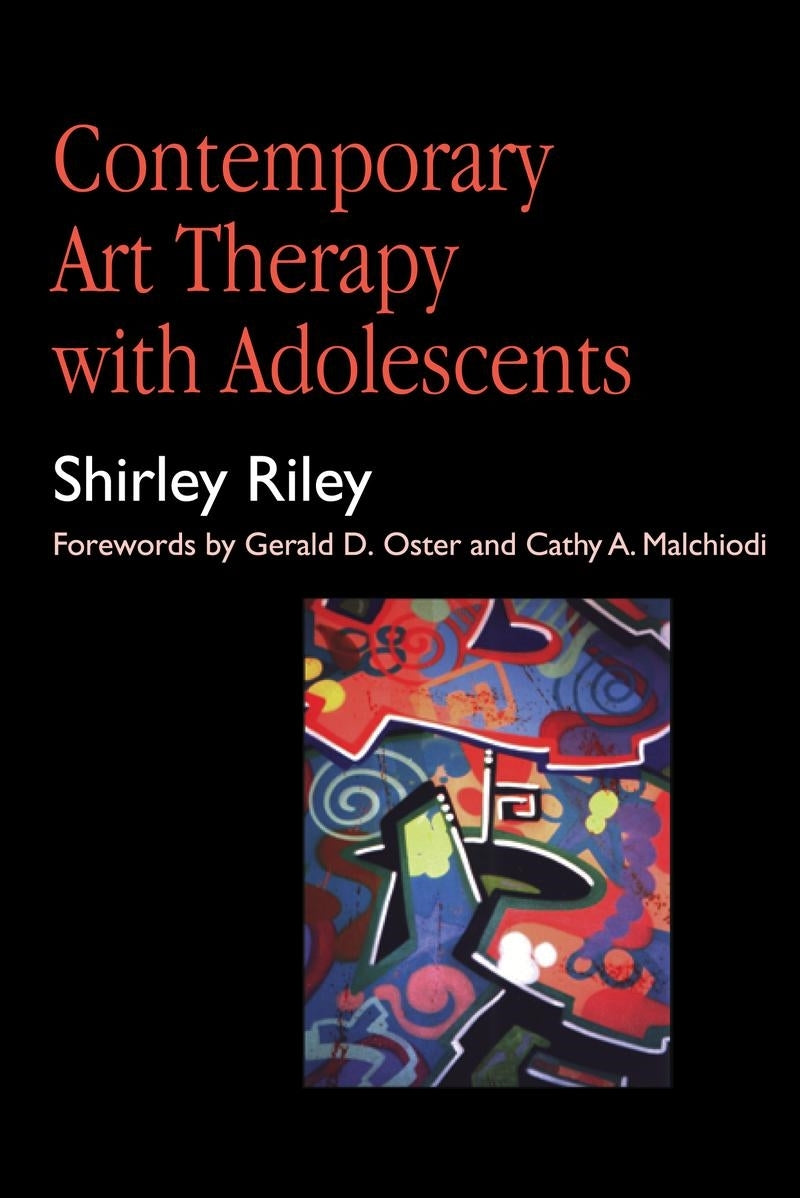
Press Reviews
Napot
In this well-written and informative book, the author presents a balanced view of working in the real world... the use of case examples is excellent, and aids the reader in transferring information into the real world-often enabling identification with clients known to them. This book is clear and easy to read, and offers many practical ideas for activities. The author's obvious warmth and enthusiasm in working with this often challenging client group shine through, and she encourages readers to share this and to develop their own practice. Overall, it is felt that this book would be of benefit to many clinicians working with adolescents, whether they already use art/creative techniques in their practice, or whether it is a new approach they are considering.
From the Foreword by Cathy Malchiodi
Shirley Riley has synthesized her vast clinical experiences with young people into a wonderfully pragmatic, insightful and realistic text which addresses contemporary adolescence and today's priorities in adolescent treatment. This book finally brings adolescent art therapy into the postmodern world where brief, solution-focused treatment is a must. Riley skillfully and cogently demonstrates the importance of contemporary theories of therapeutic intervention and adolescent development, taking the reader through numerous case examples which integrate contemporary theory with actual clinical practice.
British Journal of Occupational Therapy
`The real strength of this book lies in the author's wealth of clinical experience of using art therapy with individuals and groups of adolescents, recounted in a way that actively draws you into her work. The book is full of case examples illustrating and clarifying the issues raised, including honest reflection on ethical dilemmas and ideas about how retrospectively she may have handled some situations differently... the book is full of helpful ideas and practical advice. I liked the client-centered tone throughout. The perspective of seeing "each person in therapy as a member of an unfamiliar culture" (p.35) was helpful and one of many clear common-sense rules or pointers for working with this client group. This book is firmly grounded in practice, the examples are absorbing and the author's personal reflections very helpful. It is, therefore, likely to appeal to therapists working with adolescents and their families.'
The Arts in Psychotherapy
In her introduction Shirley Riley states that her general intention in Contemporary Art Therapy with Adolescents is to show helpful approaches to goal orientated treatment with adolescents. Cathy A. Malchiodi describes the book in her foreword as a compilation of Shirley Riley's years of experience working with adolescents. It contains interesting ideas, summaries, and descriptions. Riley re-frames some concepts offering important new ways of approaching and evaluating treatment. She reminds us to take in the whole adolescent and his or her world experience rather than to simply view all behaviors and characteristics as pathology. What I can believe this book can offer is one practitioner's years of experience and observations - indeed a valuable resource.
NAPOT (National Association of Paediatric Occupational Therapists)
Drawing on her wealth of experience in art therapy, Shirley Riley's refreshing approach offers rich accounts of her work with adolescents- her success and also failures.The use of case examples is excellent, and aids the reader in transferring information into the real world.This book would be of great benefit to many clinicians working with adolescents, whether they already use art/creative techniques in their practice, or whether it is a new approach they are considering.
